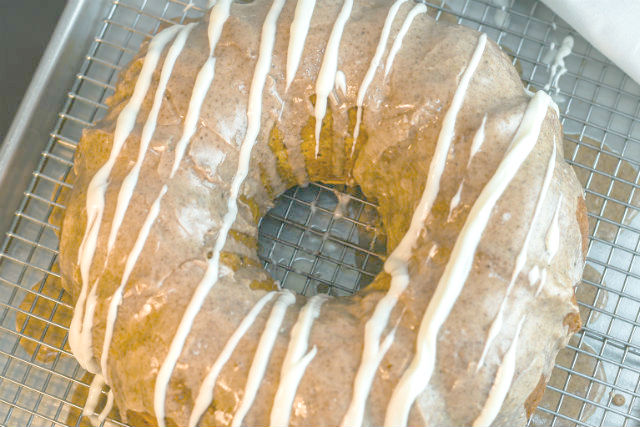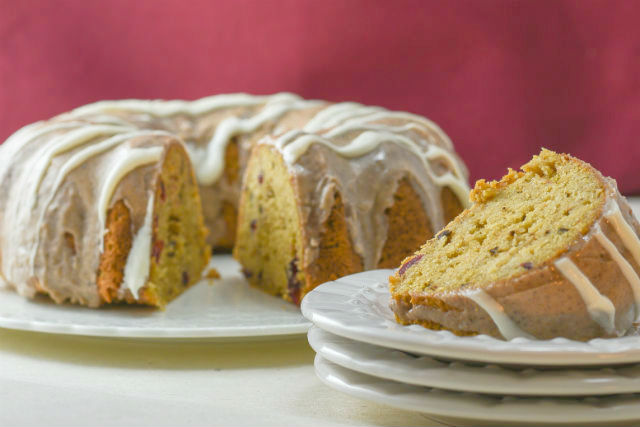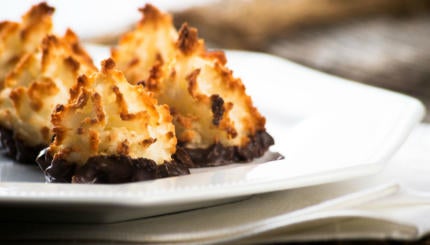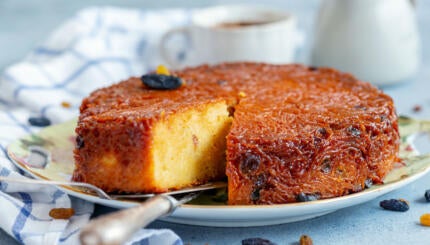I don’t remember not eating parsnips. My paternal grandmother, who was exceedingly ahead of her time in caring about our health through food, made parsnips a part of her cooking lexicon, alongside a never-ending greenmarket of other vegetables. That’s not too surprising because, although she was born and raised in the U.S., her family’s heritage was Byelorussian Jewish. But even in her 1970s-enlightened-Jack LaLanne-style kitchen, parsnips, poor parsnips, were most often relegated to soups and simple steamed side dishes, along with carrots and other root vegetables.
Parsnips themselves are nothing new. They go back as far as Roman times and were also eaten by Native Americans, though it is all but impossible to determine if it was the same parsnip we know today. Parsnips also have a culinary doppelganger—the parsley root—which confuses everyone from historians to everyday cooks. It also doesn’t help much that they are both pasternack in Yiddish. We can be sure, however, that parsnips or parsnip-alikes were commonly used in European cooking. For the part of my family of Russian heritage, like my grandmother, they were familiar, cheap and available.
But never once did she—or I—ever think of them as perfect for dessert. We were wrong.
When I was in culinary school, my non-cooking internship was with a famous photographer who worked with some of the most celebrated chefs in the world. Other than interviewing them—which, yes, was the coolest job ever—I edited recipes and took those scribbles and proportions from chef’s notes to actual recipes. Johnny Iuzzini was a world-famous pastry chef in those days, not yet having jumped into the savory world. He had a sweet dessert recipe using parsnip. Parsnips in four ways—he is a chef after all—but four incredible parsnip recipes. Just reading them was my aha moment. Cooking them was even more revelatory.
The Nosher celebrates the traditions and recipes that have brought Jews together for centuries. Donate today to keep The Nosher's stories and recipes accessible to all.

Since then, chefs, home cooks, and bloggers have caught the parsnip bug. There is even a sweet parsnip yogurt—which tastes great, by the way. When I started devising parsnip dessert recipes, cake was my first instinct, and I found that this idea works exceptionally well. But I wanted to make my parsnip dessert feel genuine to me. Parsnips were widely popular across all of Europe and I wanted the flavors to sing that tune, so gingerbread spices joined the party. Tart cherries serve as a contrast to the sweetness and warm spices, but an exotic dried tart berry like Persian barberry is also wonderful.
The lesson for me was simple: love what you know, but fear not using what you love in new ways. Have fun experimenting, and you might just end with something deliciously unique to you. Nothing tastes better than that.
Some notes for this recipe:
- Vanilla bean paste is a more intense and flavorful form of vanilla that is made from vanilla extract and vanilla bean powder or fresh vanilla bean seeds mixed with a binder such as sugar syrup, corn syrup, or xanthan gum. It has the consistency of a paste (hence, the name) and can be used in place of vanilla extract; however, they are not interchangeable unless you are using 1 teaspoon or less.
- Cultured butter is typically lower in water content and higher in butterfat than butter made in the U.S., which makes it rich and creamy. European dairy cows eat mostly grass, rather than grain, so they produce milk and butter that some feel is far sweeter and more flavorful. Also, cultured butter is made from cream that has been cultured, or fermented, before churning, which gives it added depth of flavor. Cultured butter tends to be more expensive, so some people reserve it for spreading and eating rather than cooking, but it adds lovely flavor to cooked or baked foods and its use results in nice, flaky pastry.
- To make browned butter, simply melt it in a saucepan over medium heat, swirling the pan every so often. It will foam and begin to change color. When it begins to give off a nutty aroma, remove from the heat. (In France they call it beurre noisette, or nut butter, because of this yummy aroma.) Strain through a fine-mesh strainer to remove the solids and use the liquid as called for in your recipe.
- You can find toasted or roasted nuts in most supermarkets, but if you prefer, you can roast your own: Preheat the oven to 375°F. Line a rimmed baking sheet with parchment paper. Arrange the nuts on it in a single layer and roast for 8 to 10 minutes, mixing the nuts with a long-handled spoon twice during roasting. Remove from the oven and let cool.
- Nutmeg is available ground, but if you buy the whole nutmeg, and grate it or scrape it with a sharp knife yourself, the flavor and fragrance will be much stronger. Look for it in specialty spice stores, good supermarket spice sections, or online.
Parsnip, Cherry, and Walnut Coffee Cake with Gingerbread Glaze
Ingredients
For the cake:
2 cups (260 grams) unbleached, all-purpose flour
1½ tsp (7.2 grams) baking powder
1 tsp (5 grams) baking soda
½ tsp (2.6 grams) kosher salt
3 eggs
1 cup (206 grams) packed light brown sugar
1 cup (240 grams) sour cream
2 tsp (10 grams) vanilla bean paste
½ cup (1 stick/8 Tbsp /113 grams) unsalted cultured or European-style butter, browned
3 medium parsnips (about ¾ pound/340 grams) finely grated, tightly packed (about 2 cups)
½ cup (60 grams) dried, pitted tart cherries
½ cup (57 grams) walnuts, toasted and chopped
For the glaze:
1¼ cups (155 grams) confectioners' sugar
1 tsp (2 grams) ground cinnamon
1 tsp (2 grams) ground ginger
¼ tsp ground anise seed
⅛ tsp ground coriander
½ tsp ground cardamom
⅛ tsp ground cloves
6 scrapes fresh nutmeg
½ tsp freshly ground black pepper
⅓ cup milk
Directions
Preheat the oven to 350°F. Spray a 12-cup bundt pan with nonstick vegetable oil spray and set aside. Place a cooling rack on a rimmed baking sheet and set it aside too.
Sift together the flour, baking powder, baking soda, and salt in a large bowl or onto a sheet of parchment paper.
In the bowl of a stand mixer fitted with paddle attachment, combine the eggs, light brown sugar, sour cream, vanilla bean paste, and browned butter and mix until fully combined. (Or if you wish, you can do this in a mixing bowl with a handheld electric mixer.) Add the flour mixture and mix just until a combined, leaving a few small lumps, being very careful not to overmix.
Add the grated parsnips, cherries, and walnuts and mix just until combined. Pour the mixture into the prepared bundt pan and bake for 45 to 50 minutes, or until a toothpick inserted into the center of the cake comes out clean. Set aside to cool for 5 to 10 minutes, and then carefully turn out onto the prepared cooling rack (see Kitchen Tip).
Combine the confectioners’ sugar, cinnamon, ginger, anise, coriander, cardamom, cloves, nutmeg, and black pepper in a small mixing bowl and whisk together to combine. Add the milk, 2 tablespoons at a time, mixing between additions until the the glaze reaches a pourable consistency. Pour the glaze over the cake and allow it to drip down the sides. Serve immediately or let the glaze dry and then wrap tightly in plastic until serving.
Love Jewish food? Sign up for our weekly Nosher recipe newsletter!



